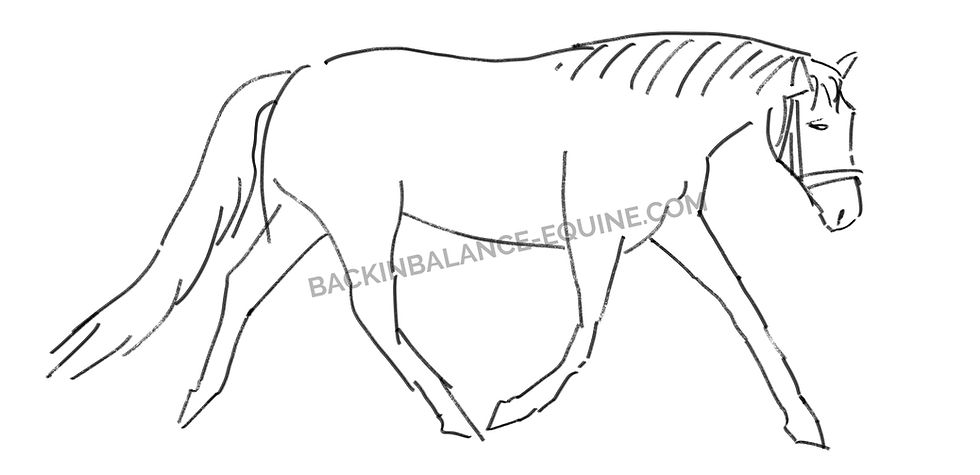The Most Underrated Exercise for Your Horse (and It’s Not What You Think)
- Academy Team
- Sep 5
- 2 min read
When we think about improving our horse’s fitness or building muscle, it’s easy to focus on faster gaits like trot and canter. But don’t underestimate the power of the walk. Whether in-hand or under saddle, walking is one of the most valuable — and often underused — tools for topline development, core strength, and overall health.

Muscle Activity at the Walk
At walk, your horse’s back, abdominal, and limb muscles are all actively engaged — just in a more controlled, deliberate way than in trot or canter.
The slower rhythm allows for greater range of joint motion and controlled recruitment of stabilising muscles.
Electromyographic (EMG) studies have shown that back and abdominal muscles are consistently active at walk, particularly when the horse is stretching forward and down (Rhodin et al., 2005).
In comparison, trot and canter rely more on elastic energy storage and release (tendons and ligaments), whereas walk requires ongoing muscular effort to stabilise the spine and pelvis.
📖 Clayton et al. (2001) highlighted that at walk, horses demonstrate significant dorsoventral spinal movement, requiring continuous muscular activity to stabilise the back.
Benefits of Walking for Muscle Development
Strengthens the Core and Topline
Slow, deliberate strides activate abdominal muscles, back extensors, and the longissimus dorsi.
Walking over poles or up gentle inclines further increases recruitment.
Improves Joint Mobility and Flexibility
Walk has the greatest range of joint motion of all gaits, particularly in the shoulder and hip.
This helps improve suppleness and maintain mobility in older or rehabbing horses.
Encourages Symmetry
With four-beat rhythm, asymmetries are easier to spot and address.
Controlled in-hand work allows for corrective exercises without rider weight.
Supports Rehabilitation
Walk is the cornerstone of most veterinary rehab programmes.
It provides low-impact strengthening while avoiding overload of healing structures.
Mental and Physical Relaxation
Walking reduces stress hormones, aids circulation, and promotes recovery after harder work.
Hacking at walk provides natural variation in terrain, further stimulating balance and postural control.
How to Maximise the Benefits
Incorporate long-rein walking in-hand to encourage posture without a rider’s influence.
Use poles and raised walk poles to stimulate greater flexion and topline activity.
Add hill walking to build hindquarter and core strength.
Mix periods of forward, down, and out stretching with collected walk to vary the workload.
The Takeaway
Walking isn’t just “warm-up” — it’s one of the most effective tools for building strength, mobility, and topline when used correctly. By incorporating deliberate walking exercises into your training routine, you’ll be investing in your horse’s long-term soundness, strength, and wellbeing.
👉 Book a Back in Balance session today to learn how structured walking exercises, combined with manual therapy and saddle fit, can transform your horse’s posture and performance.

%20(1).png)



Comments